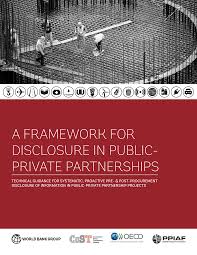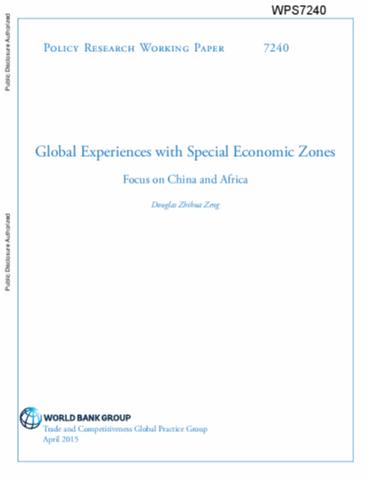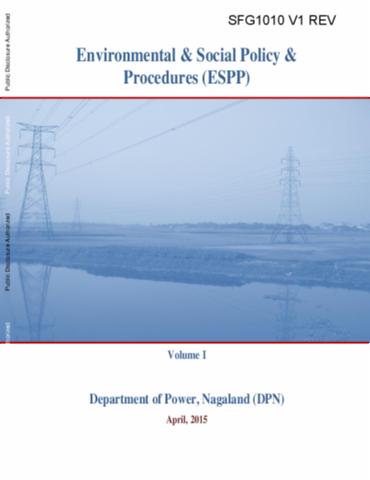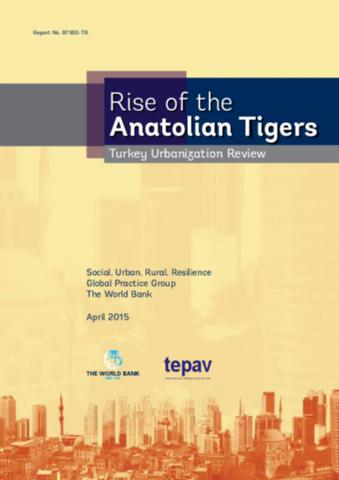The World Bank is a vital source of financial and technical assistance to developing countries around the world. We are not a bank in the ordinary sense but a unique partnership to reduce poverty and support development. The World Bank Group has two ambitious goals: End extreme poverty within a generation and boost shared prosperity.
- To end extreme poverty, the Bank's goal is to decrease the percentage of people living on less than $1.25 a day to no more than 3% by 2030.
- To promote shared prosperity, the goal is to promote income growth of the bottom 40% of the population in each country.
The World Bank Group comprises five institutions managed by their member countries.
The World Bank Group and Land: Working to protect the rights of existing land users and to help secure benefits for smallholder farmers
The World Bank (IBRD and IDA) interacts primarily with governments to increase agricultural productivity, strengthen land tenure policies and improve land governance. More than 90% of the World Bank’s agriculture portfolio focuses on the productivity and access to markets by small holder farmers. Ten percent of our projects focus on the governance of land tenure.
Similarly, investments by the International Finance Corporation (IFC), the World Bank Group’s private sector arm, including those in larger scale enterprises, overwhelmingly support smallholder farmers through improved access to finance, inputs and markets, and as direct suppliers. IFC invests in environmentally and socially sustainable private enterprises in all parts of the value chain (inputs such as irrigation and fertilizers, primary production, processing, transport and storage, traders, and risk management facilities including weather/crop insurance, warehouse financing, etc
For more information, visit the World Bank Group and land and food security (https://www.worldbank.org/en/topic/agriculture/brief/land-and-food-security1
Resources
Displaying 946 - 950 of 4907A Framework for Disclosure in Public-Private Partnership Projects
This framework provides guidance on policy and practice in public-private partnerships and on the mechanics of disclosure by practitioners within governments and the private sector, to help develop programmes for the systematic, proactive pre- and post- procurement disclosure of information.
Global Experiences with Special Economic Zones
This study briefly summarizes the development experiences of special economic zones in China and Africa, the lessons that Africa can learn from China, and the preliminary results of the Chinese investments in special economic zones in Africa. The study makes recommendations on how to unleash the power of special economic zones and industrial zones in Africa through strategically leveraging the Chinese experiences.
Environmental and Social Policy and Procedures
The North Eastern Region (NER) in India is endowed with rich energy resources but faces significant bottlenecks in electricity access and availability levels. The per capita power consumption in NER is one-third of the national average. The region has a shortfall of about 500MW installed capacity against peak demand of about 1950 MW. No significant generation capacity has been added in the recent past. Therefore, inadequate power supply continues a critical constraint to sustainable growth and economic development in the NER.
Rise of the Anatolian Tigers
Turkey’s demographic and economic transformation has been one of the world’s most dramatic, with urban growth and economic growth proceeding hand in hand. Distinguishing Turkey from many other developing countries has been the pace, scale, and geographical diversity of its spatial and economic transformation. Fast-growing secondary cities bring added challenges that define Turkey’s second-generation urban agenda.
The Nuts and Bolts of Baseline Setting
This document provides an overview of
baseline setting for greenhouse gas (GHG) crediting
mechanisms. The first section briefly explains the general
purpose and objectives of setting a crediting mechanism
baseline. The second section summarizes key policy
considerations in defining and setting baselines. The final
section covers important technical elements of baselines and
provides an overview of various methods that can be used to










